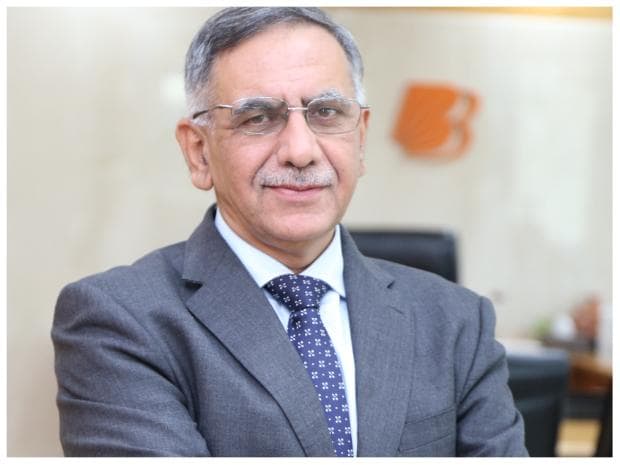[ad_1]
After the banks’ Q3 earnings, Sanjiv Chadha, MD&CEO, Bank of Baroda, spoke to Subrata Panda on the banks’ exposure to the Adani Group, and how its loan and deposit growth will pan out, going forward. Edited Excerpts:
Is there any concern about the Adani exposure you have?
I don’t believe so. It’s a relatively modest exposure that we have. Also, it is spread over a number of companies. These companies operate in different segments. They have operating assets, cash flows. Around 30 per cent of the exposure of the banks’ where they are in a joint venture with public sector companies. So, I think we are very well placed. There is nothing at all which is there to impact existing operating assets.
Would you look at proactively making provisions for the standard assets of Adani Group?
There is no reason to do so. Our overall book is in a robust shape. I believe we are significantly over provisioned. There will always be a possibility of some part of the book having some stress. I think we are very well provided for that. To my mind, regardless of the factor that you mentioned, the credit quality will continue to improve, gross and net non-performing assets (NPAs) will continue to come down and profitability will continue to improve.
Where do you see your net interest margin (NIM) settling at?
The improvement in NIMs that we have seen is on account of a number of factors. There is some impact of the natural lag that exists between repricing of asset and liabilities. We have also seen some structural changes in the balance sheet and primarily they are coming from a larger composition of retail assets and within retail assets, a significantly larger composition of personal loans. This is something that is likely to play out as we go ahead. The kind of growth we are seeing in our loan book (20 per cent), naturally, the impact of this will play out next year fully. My own assessment is, what we see as NIMs now should be fairly sustainable as we go ahead.
BoB’s deposits have grown faster than the industry. What is the strategy that you have adopted?
We have made investments in terms of making sure that our savings banks franchise is strengthened. That has happened largely through technology intermediation. Secondly, we are in a rising interest rate scenario, and we have to make sure that the rate sensitive customers get a fair deal, given the current situation. So, we have an offer for 399 days which yields 7.8 per cent to senior citizen customers. This means, the deposit interest rate has actually become positive on a real basis after a long time and the relative attractiveness of banks as a channel for deploying surpluses has improved.
The corporate book has shown healthy growth this quarter. Would you continue growing this book at the current pace?
Last two years, we chose not to grow our corporate book because the margins did not support that. We wanted to make sure that we do not compromise on the underwriting standards or the margins. At the beginning of the year, we had guided that finally we have come to the stage that it is possible to both grow the corporate loan book and have the margins intact and that is what we are seeing. Now when the interest rates are normalising, liquidity is normalising, banks have reasonable pricing power to be able to push corporate loan growth while keeping the margins intact. So, I think we would see some acceleration in the corporate book, particularly because the broader capex cycle is strengthening. It would also benefit from this budget, where the commitment of the government towards capital expenditure is 33 per cent more than last year.
Credit growth has seen some moderation on the system level. How do you see your advances book expanding going into next year?
This year credit growth has surprised us. We thought it would be 12 – 15 per cent but it’s coming out as 20 per cent. Our stance has been that we want to grow in tandem with the market or a little faster than that. For next year, to my mind, the correlation between the nominal growth rate and the loan growth rate should come back. The budget says the nominal growth rate would be 10.5 per cent so I think our loan growth could be 14 – 15 per cent.
Would there be no impact of slow growth, high inflation on your asset quality?
I don’t believe so. The current interest rate was not out of sync with what has been the past interest rates if you look at the past five-year horizon. In India, these interest rates were there a few years back. So, there is no reason to suppose that they should be disruptive at all. Also, a lot of the balance sheets have got strengthened and stress proofed. So, all the borrowers have seen tough times and they have the resilience to absorb this rise in interest rate.
[ad_2]
Source link



